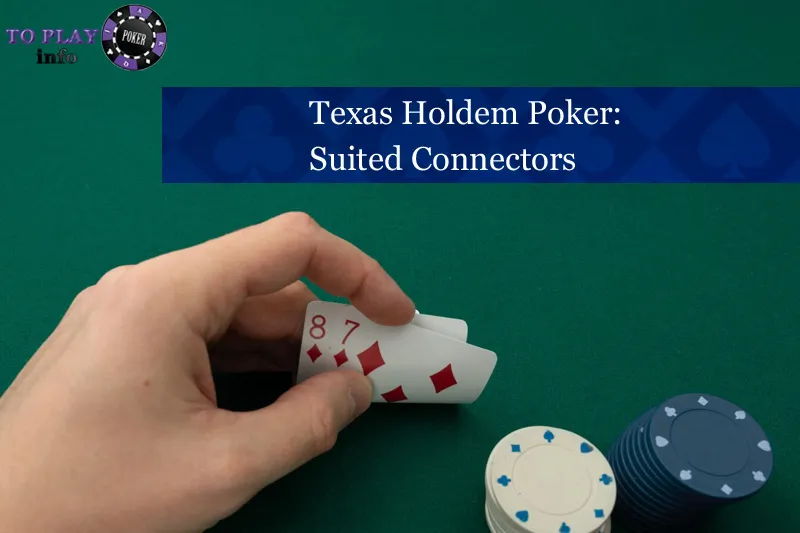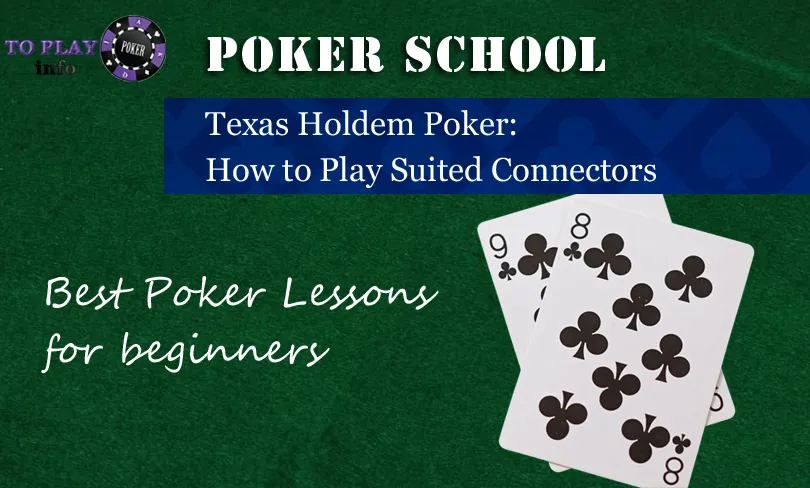Suited connectors are among the most underrated starting hands in No-Limit Texas Hold’em. Many players don’t realize how much potential they have — both for making disguised strong hands and bluffing in the right spots. In this article, we’ll show you everything you need to know about these hands: from how to play them preflop to advanced postflop tactics.
Whether you’re just learning or looking to improve your strategy for playing suited connectors, this guide will help you avoid common mistakes and start using these hands to build your stack. Let’s break it down, step by step.
Contents:
- What Are Suited Connectors?
- How to Play Suited Connectors Preflop
- Postflop Strategy with Drawing Hands
- Suited Connectors vs Pocket Pairs
- Using Suited Connectors to Bluff
- FAQ
What Are Suited Connectors?

Suited Connectors Poker: Quick Overview
In poker, players aim to leverage the hidden strength of suited hands of connected cards of the same suit — maximizing value through disguised hands and strategic aggression. These hands aren’t just about luck; they require deep understanding of ranges, position, and postflop play.
Suited connectors poker refers to two consecutive cards of the same suit — for example, , , or . These hands offer great potential to make straights, flushes, and even straight flushes.
Because they can hit disguised monster hands, this combo is ideal for both value and bluffing. Their strength comes from how hard they are to put on when they connect.
How to Play Suited Connectors Preflop
Understanding how to play suited connectors preflop is all about position and stack depth. From early position, stick to stronger ones like or . In late position, expand your range to include lower connected suited cards like .
When facing a raise, these hands become speculative. They’re worth calling with deep stacks and position. But with short stacks or against tight players, it’s often better to fold.
Against weak or passive players, you can even 3-bet bluff — especially when you block their calling range.
Postflop Strategy with Drawing Hands
These hands shine postflop when you hit a strong draw or disguised monster. Weak top pairs are rarely worth continuing with, especially out of position.
Flush and straight draws give this type of holding perfect semi-bluff potential. You can apply pressure on opponents who fold to aggression — especially with fold equity on your side.
They often qualify as drawing hands. Played correctly, they can win big pots or force folds from stronger preflop hands.
Playing these hands well requires a balance between patience and aggression. Don’t chase every draw — but know when to pressure opponents using fold equity and implied odds.
Suited Connectors Odds and Probabilities
The odds of hitting a straight with suited connectors by the river are roughly 9%, while flush draws hit around 35% with two cards to come. These odds improve postflop, especially with combo draws that offer multiple ways to win. Understanding the odds helps you decide when to call, fold, or semi-bluff.
Suited Connectors vs Pocket Pairs
Both are speculative, but play differently. Pocket pairs aim to hit a set, while these connected hands aim to make disguised straights, flushes, or semi-bluffs.
For example, (a pocket tens) can be hard to play postflop when overcards hit. Hands like offer more flexibility and disguise your strength.
Pocket pairs rely on set mining; suited connectors thrive on board texture and postflop skill. Don’t overplay either without the right conditions.
Using Suited Connectors to Bluff
This category of hands is great for bluffing. They often have equity — gutshots, backdoor draws, or blockers — and that’s ideal for semi-bluffs.
Say you have on . You’ve got a flush draw, gutshot, and excellent semi-bluff potential. Pressure can fold out better hands.
Bluffing with speculative hands works best in position. Just make sure you have outs — bluffing without equity is rarely profitable.
Want to go deeper? Read our full guide on mastering the poker semi bluff.
Conclusion
these hands can be powerful tools when played with purpose. Don’t overvalue them — but when the time is right, they can win massive pots and crush predictable ranges.
Mix them into your game smartly. Avoid calling too wide, and always factor in position and stack size. That’s what separates good players from great ones.
“Smart players use these hands like tools — not toys. Timing is everything.”
FAQ: these hands in Poker
They’re two consecutive cards of the same suit — like . These hands can make strong draws and hidden monsters.
Yes, especially in position and with deep stacks. Just avoid overplaying them without proper odds or fold equity.
If you’re deep stacked and in position — yes. Otherwise, especially against tight players, it’s often better to fold or mix in a bluff.
Pocket pairs aim for sets; these hands aim for disguised straights, flushes, and flexible lines. Read more in our Pocket Tens strategy.
Suited connectors vs suited gappers is a classic comparison in poker strategy. Suited connectors are cards like 7♠8♠ — consecutive and same suit. Suited gappers skip one rank (e.g., 7♠9♠). Gappers have slightly lower playability due to reduced straight potential, but can still be profitable with proper postflop strategy.
🎯 If you’re ready to put your these hands to the test, try real hands on trusted platforms like CoinPoker and Tigergaming Poker. Fast action, crypto play, and soft fields await.


Facebook Comments